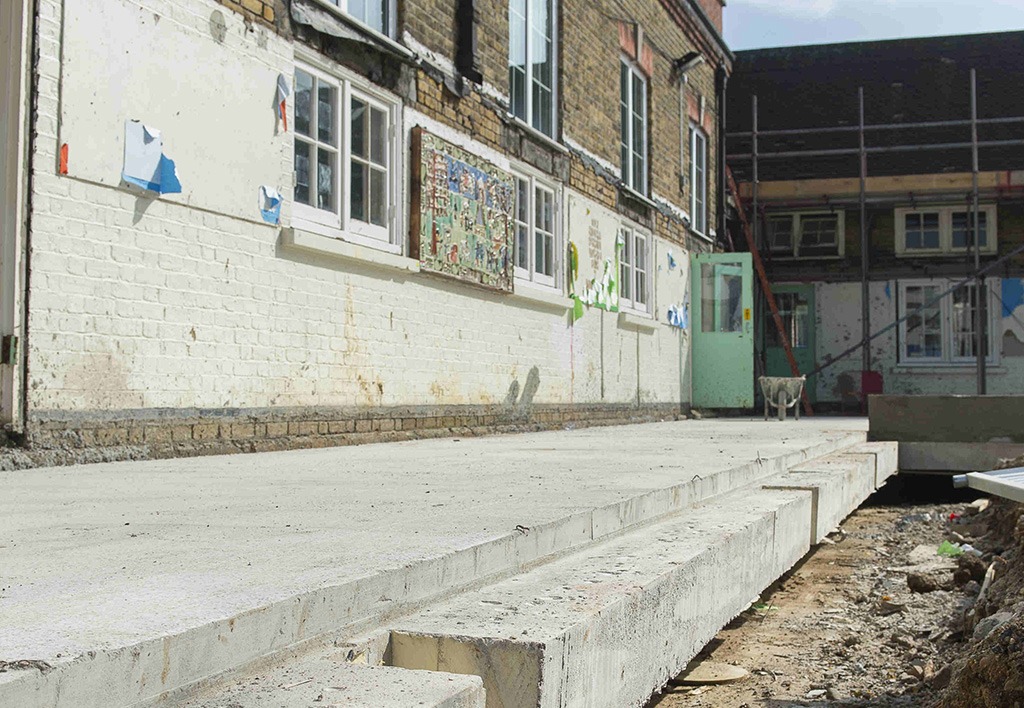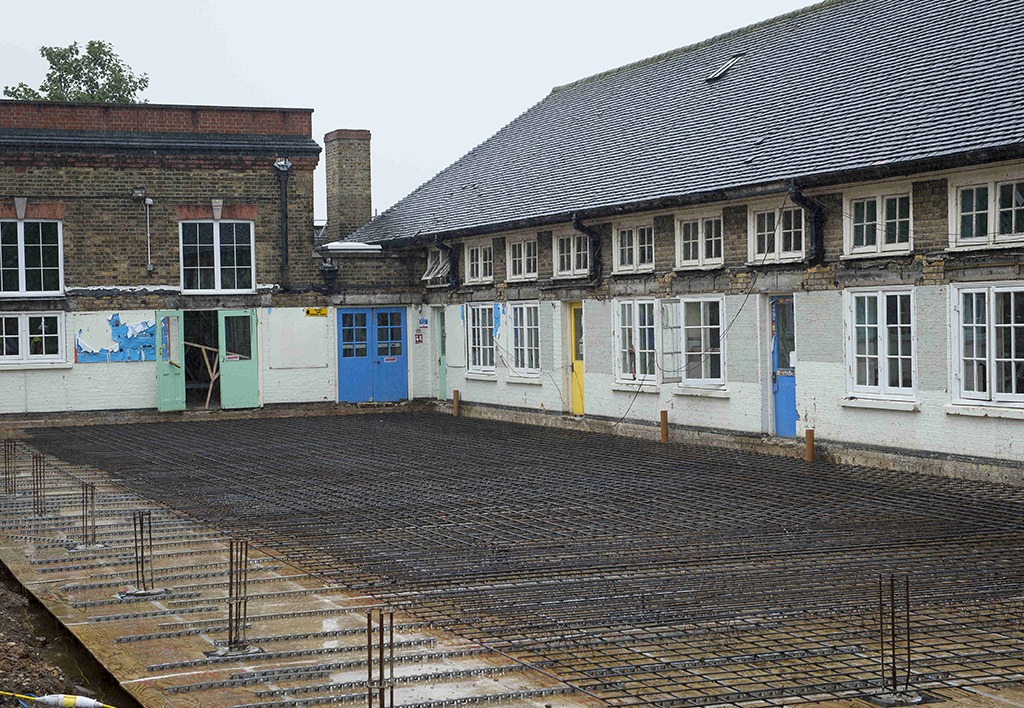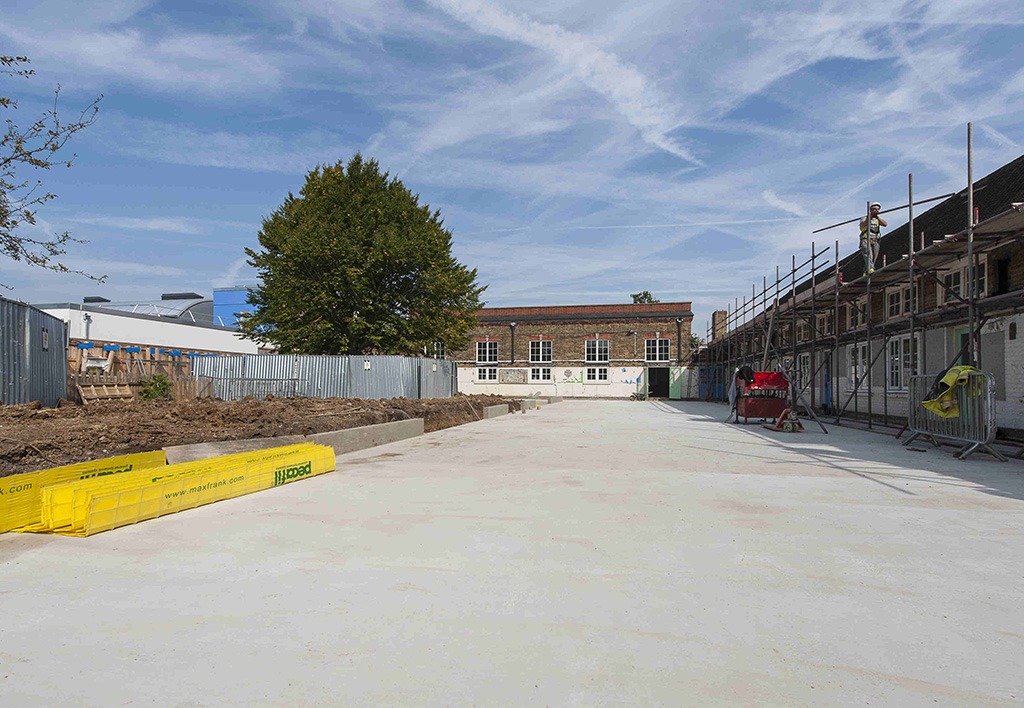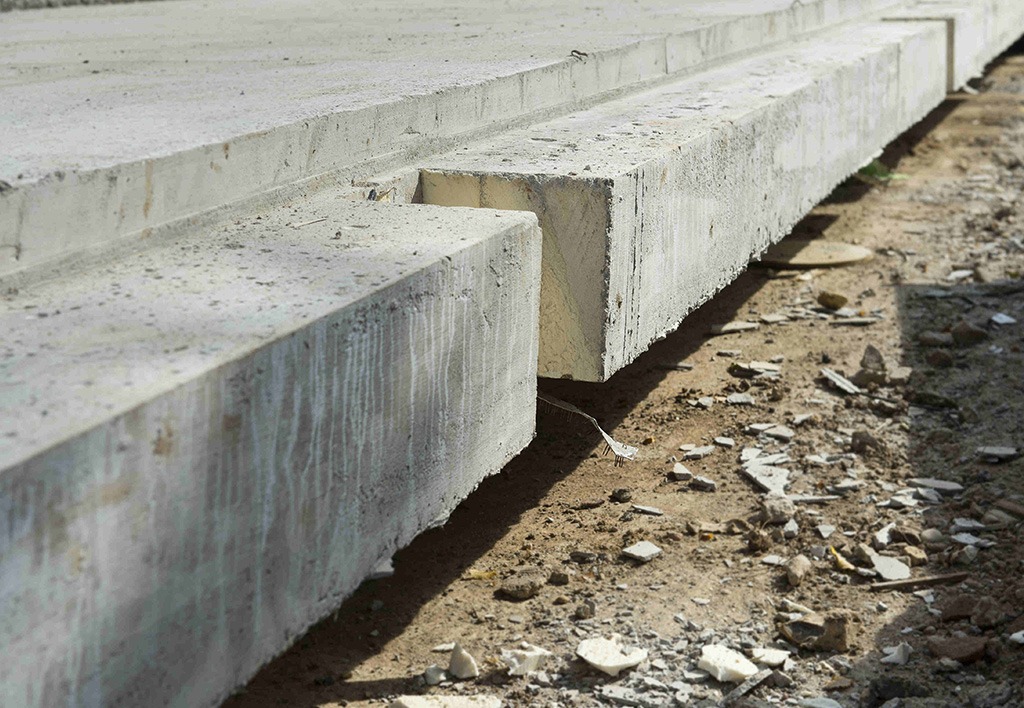PROJECT BRIEF
COMBISLAB, by Roger Bullivant Limited (RBL) was the specified engineered solution on the site of a challenging refurbishment and redevelopment of an existing school. RBL was commissioned to design and install the foundation and flooring system with minimal disturbance and impact on the school’s operations, and with the aim of minimising building costs within a restricted construction period.
KEY ISSUES
The site formed part of an existing school and it was essential to ensure everything continued to function normally while work was carried out. Access was restricted to entrances away from normal site access routes for reasons of public safety. To ensure site deliveries did not coincide with school starting and finishing times, RBL worked to a strict schedule of times to avoid congestion.
As well as school restrictions, matters were further complicated on site by poor ground conditions. Desiccated clay subsoils presented the need for the creation of a heave void due to the influence of adjacent trees, and required the use of mini piling rigs due to restricted access on site. The school continued to operate throughout the duration of the works, which also required stringent control of plant, labour and material movements.
The foundation and floor slabs were designed to minimise excavation, limit the amount of time on site and reduce the need for large items of plant on site, particularly when working near operational classrooms.
A high-bay single-storey steel framed and brick clad building with heavy concentrated loads and perimeter line loads was proposed by the architects and engineers.
SOLUTION
The site was firstly excavated by the main contractor to formation level which was 475mm below structural slab level. The formation was compacted to test the surface for soft spots and then a working platform of 50 to 60mm of concrete was applied to seal the surface suitable for RBL’s mini piling rigs. This also provided a platform from which to form the suspended COMBISLAB.
A mini piling rig weighing just 2.5Tonnes was used to install 78 No. 300mm piles to depths up to 11m using sectional fl ight augers (SFA). Piles were sleeved above formation level by 500mm in order to build the pile head into the soffit of the suspended raft.
A collapsible and removable falsework soffit support system was installed to create a 300mm void; a sacrificial plywood deck was placed over to form the raft foundation and flooring system, edge shuttering and reinforcement placed and the raft poured. The raft was 300mm thick with upstands to the perimeter totalling all 480m2.
On removal of the soffi t support system,the void around the perimeter of theslab was protected with ground support systems, during backfilling.
Work on site took six weeks in total; two weeks SFA piling and four weeks for the creation of the COMBISLAB.
ADVANTAGES OF COMBISLAB
- Can be ground bearing or suspended for heave protection or landfill gas ventilation
- Pile positions can be flexible to avoid obstructions in the ground
- Can be installed with ground treatment systems as well as piled systems, depending on ground conditions
- Suitable for large commercial, schools, hotels and residential developments
- Load sharing systems with settlement mitigation piles can apply to limit differential settlement where high concentrated loads exist
- Minimal excavation is required which is useful on contaminated sites where disposal of arisings can be costly
- Construction is rapid, minimising site overheads
- Limited handovers between groundwork trades speeds up process
- Cost-effective solutions for most site conditions, designed and installed by one company





